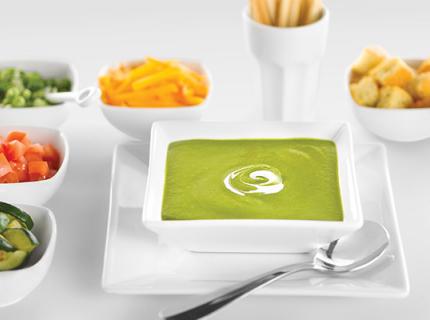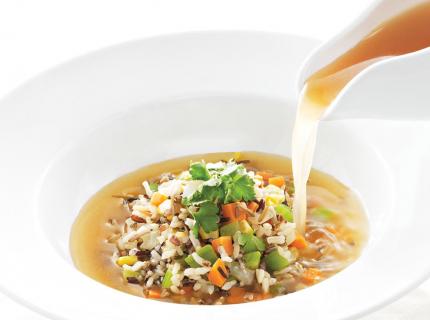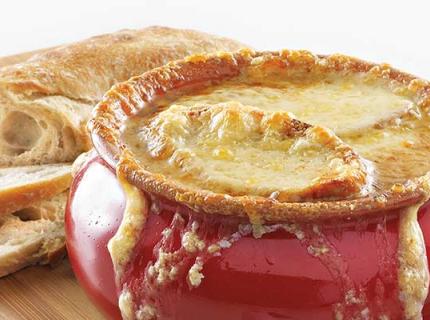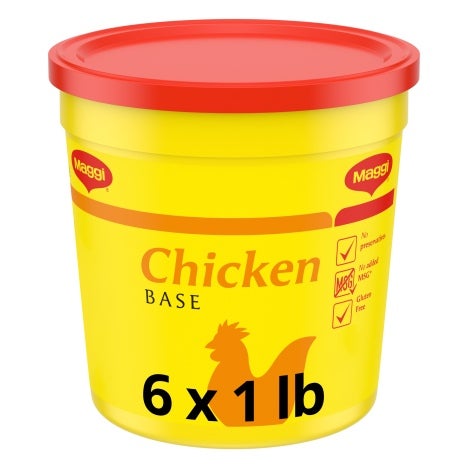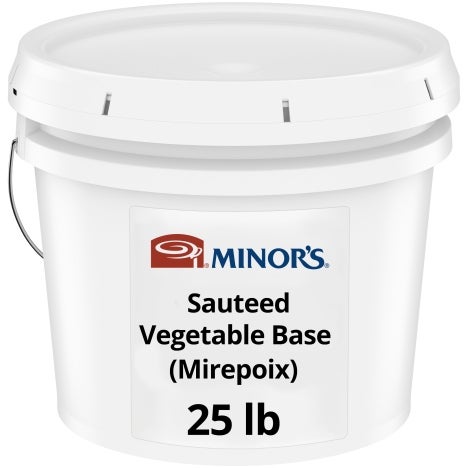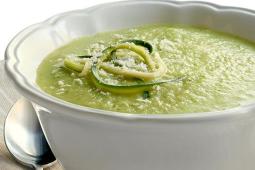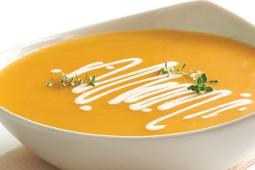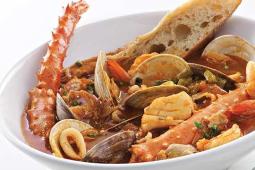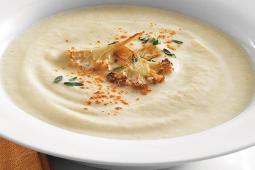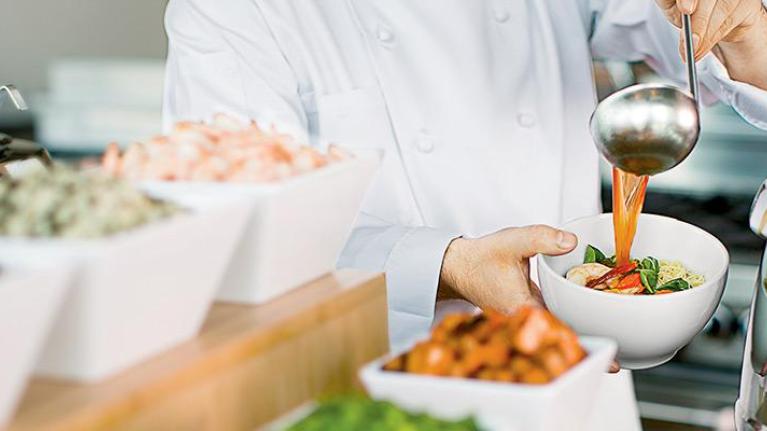
Signature Soups Spur Sales
Soup is a kitchen classic that doesn’t have to be boring. Liven up your menu with these soup ideas. Your customers will love your signatures.
Soups have been an integral part of the menu since the beginnings of the first restaurant. In fact, the word restaurant is derived from the French “to restore.” The original restaurants in France were humble enterprises that served soup to restore vigor and quell hunger pangs until something more hearty could be obtained.
Soups also have a reputation for requiring considerable resources to produce. At one time that was indeed true: Making soup and its kin (including stocks and sauces) required extensive time and back-of-the-house labor.
As Minor’s® Corporate Executive Chef George Sideras, CEC, AAC, puts it: “Even a cursory examination of old cookbooks will yield such handy tips as 'Have your butcher deliver meaty soup bones and boil for several hours to provide a rich and hearty broth'—and that’s just the start. The amount of mincing, slicing, dicing, and straining was overwhelming. It’s no wonder that operators shy away from implementing an in-house soup program."
But many diners, when inquiring about soup, want to know if it’s made from scratch. In fact, “kitchen made” soup is an important benchmark of quality. Fortunately, with minimal investment in equipment and raw materials, you can embark on an in-house program.
For more ideas, and products that can be used to produce delicious scratch-quality soups, see below.
Chef Sideras shares some additional tips, strategies, and ideas for getting more mileage out of the soup category.
Tip 1: Start small. Find that one soup that you love and make it your own, so that customers who ask “Is this homemade?” will start frequenting your operation just to order it. Make one soup well and feature it every day.
Tip 2: Use quality ingredients. It’s a myth that great soups are thrown together and made from leftovers. Quality ingredients ensure quality soups; don’t sacrifice sales dollars by pinching prep pennies.
Tip 3: Put a twist on a favorite. Take a familiar soup and give it a stamp of your own. For example, accompany Tomato Bisque with mini grilled cheese sandwich bites; garnish bean soup with crispy pork skins, or top a chicken noodle soup with seasoned popcorn. Signaturizing a soup makes for a fun customer experience.
Tip 4: Use benchmarks. Have an established recipe along with the benchmarks and indicators of how you are going to judge quality. How thick should the soup be; what is the ratio of broth to vegetables; what is the proper temperature for serving the soup? By clearly establishing guidelines and taking corrective measures when the finished results fall short, your kitchen-made soup can become a real profit center.
Tip 5: Build sales around soup. It is far easier to get incremental dollars from the customer in the seat than trying to acquire a new one. Encourage the waitstaff to hand-sell the soup offerings—“Would you like a cup of our fresh soup of the day to start off your meal?” Price your soup to sell, remembering that the gross profit dollar on soup can be very attractive. The secret is to build check averages one dollar at a time.
Tip 6: Be creative. Once you have established one signature soup you can begin to expand your offerings, slowly building a repertoire of soups a little at a time. There are hundreds of soup inspirations to choose from. Start the process by asking yourself, “How can I offer something familiar but still put my signature on it to make it unique?” Sure, chicken noodle soup is good, but try adding the flavor of Minor's Herb de Provence and serve it with a slice of buttered baguette to create a unique French Country Peasant Soup. Everybody loves butternut squash soup, but what if you add a bit of coconut milk and Thai-style red curry paste to amp up the flavor? Soup can truly be a blank canvas for unleashing creativity.
Tip 7: Be seasonal. Because so many soups utilize vegetables and even fruits, the category represents an excellent vehicle for showcasing seasonal ingredients, from winter’s hearty root vegetables to the ripe tomatoes of August. And soup isn’t just something that’s served hot. In fact, there is a whole lexicon of chilled soups that are perfect for warmer weather or for establishing a lighter vibe, including such traditional favorites as vichyssoise, gazpacho, and chilled cucumber soup.
TRY THIS
Garnishes and accompaniments represent an easy and effective way to add value to soup:
A float of sour cream, crème fraiche, or seasoned, unsweetened whipped cream
A half sandwich or Hot Pockets® as part of a Value Meal
Breadstick, biscuit, cornbread, or other specialty bread
A caddy or self-service condiment bar of appropriate flavor boosters, such as chopped fresh herbs, diced tomatoes or scallion, shredded cheese, and so on, which allows patrons to customize their own soup experience
GET STARTED
Many great soups start with stock. Look to the wide range of Minor’s and Maggi bases for your starting point.
DID YOU KNOW?
Soups have been an integral part of menu since the beginnings of the first restaurant. In fact, the word restaurant is derived from the French “to restore.” The original restaurants in France were humble enterprises that served soup to restore vigor and quell hunger pangs until something more hearty could be obtained.
